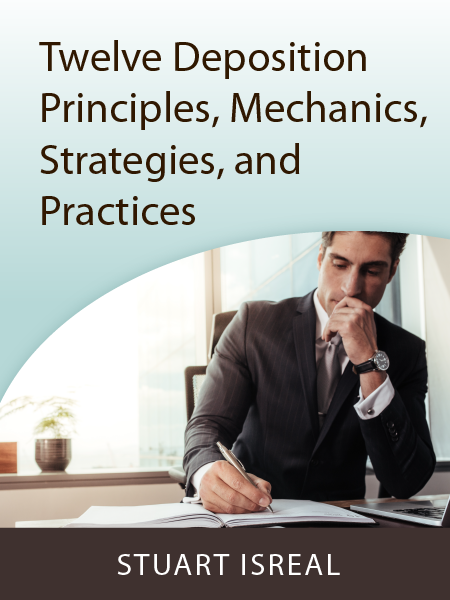This article addresses 12 basic deposition principles, mechanics, strategies, and practices, including who may be deposed, when, where, and how to get them there, limitations on the number and duration of depositions, the relationship between depositions and paper discovery, Rambo litigation tactics, and other nuts, bolts, and screws that hold the deposition process together.
1. WHO MAY BE DEPOSED
A party may take the deposition of “any person, including a party.”1 That’s any person.
An organization—“a public or private corporation or a partnership, an association, a governmental agency or other entity”—may be deposed, testifying through designated representatives.2
The party seeking a Rule 30(b)(6) deposition names in its notice or subpoena the organization as the deponent, and describes “with reasonable particularity the matters for examination.” The organization must then “designate one or more officers, directors, or managing agents, or other persons who consent to testify on its behalf.” The “persons designated must testify about information known or reasonably available to the organization.” The organization “may set out the matters on which each person designated will testify.”
Rule 30(b)(6) designation may be required by notice to an organization-party or by Rule 45 subpoena advising “a nonparty organization of its duty to make this designation.”3 A party’s Rule 30(b)(6) designees testifying on “behalf” of the party can make Federal Rule of Evidence (FRE) 801(d)(2) admissions binding on that party. Under Rule 32(a)(3), the “adverse party” may “use for any purpose the deposition of a party or anyone who, when deposed, was a party’s officer, director, managing agent, or designee under Rule 30(b)(6).” A Rule 30(b)(6) deposition is advantageous when you don’t know who within an organization has the desired information or when multiple individuals have different pieces of it. It also provides an antidote to buck-passing by an organization’s officials who have been individually noticed. The Rule 30(b) (6) deposition notice puts the burden on the organization to identify and produce knowledgeable witnesses.
The Practical Lawyer
Click here to read the full article, which was originally published in ALI CLE’s The Practical Lawyer.
Subscribe to the print or digital version of The Practical Lawyer today.


